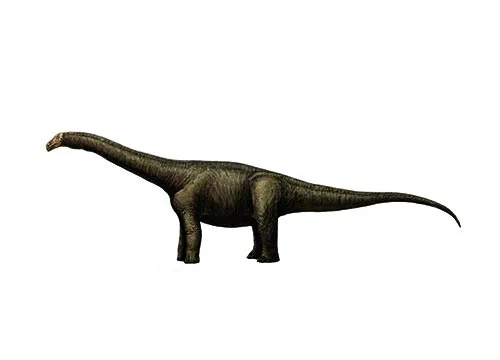Nemegtosaurus (Nemegt lizard)

Neh-meg-toe-sore-us
Nowinski – 1971
Herbivore
Estimated 12-15 meters long
Sauropod
N. mongoliensis (type)
Mongolia – Nemegt Formation
Late Cretaceous, 75-70 million years ago
Nemegtosaurus Facts
Nemegtosaurus was a genus of sauropod dinosaur that lived during the Late Cretaceous period, approximately 70-75 million years ago. Its fossils were first discovered in the Nemegt Formation of Mongolia, from which it derives its name.
The Nemegt lizard was a relatively small sauropod, measuring around 12-15 meters (39-49 feet) in length and weighing about 4-5 tons. It had a long neck and tail, with a large, bulky body that was supported by four sturdy legs. Its long neck allowed it to reach high into the trees to feed on leaves and other vegetation.
One of the most distinctive features of Nemegtosaurus was its teeth, which were spoon-shaped and adapted for grazing on tough vegetation. This is in contrast to other sauropods, which typically had peg-like teeth for browsing on softer plants.
Nemegtosaurus is known from several fossil specimens, including partial skeletons and individual bones. These fossils have provided valuable information about the anatomy and behavior of this dinosaur, as well as its evolutionary relationships with other sauropod dinosaurs from the Late Cretaceous.
In conclusion, Nemegtosaurus was a unique and interesting dinosaur that lived during the Late Cretaceous period in what is now Mongolia. Its distinctive spoon-shaped teeth and adaptations for grazing on tough vegetation set it apart from other sauropods of its time. Its fossils serve as a valuable source of information about the diversity of life that existed on Earth millions of years ago, and the important role that paleontology plays in uncovering and understanding this history.



